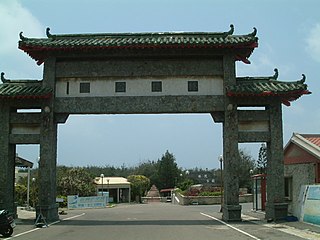
Nantou County is the second largest county of Taiwan by area, located in the central part of the country. It is also the only non-coastal county in Taiwan. Its name derives from the Hoanya Taiwanese aboriginal word Ramtau.
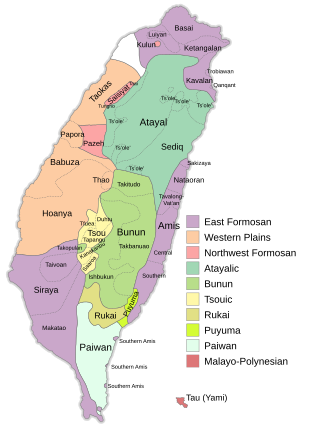
The Formosan languages are a geographic grouping comprising the languages of the indigenous peoples of Taiwan, all of which are Austronesian. They do not form a single subfamily of Austronesian but rather nine separate subfamilies. The Taiwanese indigenous peoples recognized by the government are about 2.3% of the island's population. However, only 35% speak their ancestral language, due to centuries of language shift. Of the approximately 26 languages of the Taiwanese indigenous peoples, at least ten are extinct, another four are moribund, and all others are to some degree endangered.

The Hoanya are a Taiwanese Aboriginal people who live primarily in Changhua County, Chiayi City, Nantou County, and near Tainan City.
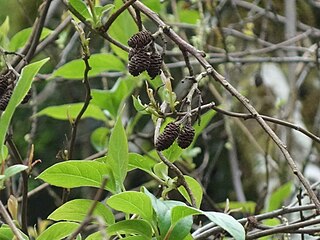
Alnus formosana, the Formosan alder, is a species of alder endemic to Taiwan. It is a medium-sized tree, up to 20 metres (66 ft) in height and 40 centimetres (16 in) in trunk diameter.
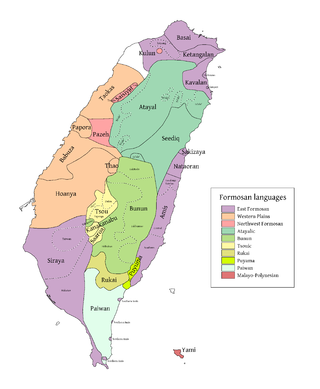
Saisiyat is the language of the Saisiyat, a Taiwanese indigenous people. It is a Formosan language of the Austronesian family. It has approximately 4,750 speakers.

Fengbin Township is a rural township located in Hualien County, Taiwan, bordering Taitung County. The Pacific Ocean lies to the east and the Hai'an Range to the west.

The Seediq are a Taiwanese indigenous people who live primarily in Nantou County and Hualien County. Their language is also known as Seediq.
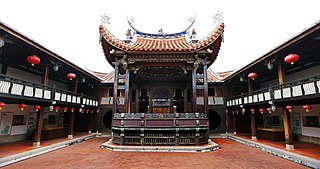
Wufeng Lin Family Mansion and Garden is the former residence and grounds of the Wufeng Lin Family in Wufeng District, Taichung, Taiwan. Owing to the size of the Lin family clan, the vast site can be divided into two sections, the Upper (頂厝) and Lower (下厝) Mansions. The Lai Garden constructed by Lin Wenqin is commonly known as The Lin Family Garden (林家花園).

Luilang, or ambiguously Ketagalan, was a Formosan language spoken south of modern-day Taipei in northern Taiwan by one of several peoples that have been called Ketagalan. The language probably went extinct in the mid-20th century and it is very poorly attested.
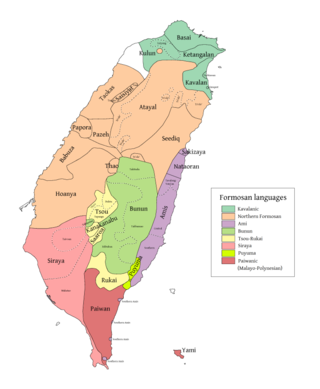
Sakizaya is a Formosan language closely related to Amis. One of the large family of Austronesian languages, it is spoken by the Sakizaya people, who are concentrated on the eastern Pacific coast of Taiwan. Since 2007 they have been recognized by the Taiwan government as one of the sixteen distinct indigenous groups on the island.

Kulon is an extinct language of the Taiwanese aboriginal people that belonged to the Austronesian language family. Very little data is available for Kulon; the primary source is the 60 pages of Tsuchida (1985). Li (2008) follows Tsuchida in linking Kulon with Saisiyat, while Blust (1999) proposes it was more closely related to Pazeh.

Plains indigenous peoples, previously called plain aborigines, are Taiwanese indigenous peoples originally residing in lowland regions, as opposed to Highland indigenous peoples. Plains indigenous peoples consist of anywhere from eight to twelve individual groups, or tribes, rather than being a single ethnic group. They are part of the Austronesian family. Beginning in the 17th century, plains indigenous peoples have been heavily influenced by external forces from Dutch, Spanish, and Han Chinese immigration to Taiwan. This ethnic group has since been extensively assimilated with Han Chinese language and culture; they have lost their cultural identity, and it is almost impossible without careful inspection to distinguish plains indigenous peoples from Taiwanese Han people.
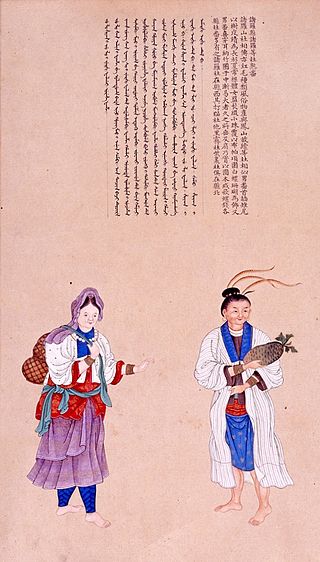
Lloa is a group of Austronesian indigenous Formosan people living in the southern plain of Taiwan from Yunlin, Jiayi, to northern Tainan. They have lived through the Dutch colonization of Taiwan, as well as the Manchurian occupation during the Qing dynasty.

The Taivoan or Tevorangh are a Taiwanese indigenous people. The Taivoan originally settled around hill and basin areas in Tainan, especially in the Yujing Basin, which the Taivoan called Tamani, later transliterated into Japanese Tamai (玉井) and later borrowed in Chinese (Yujing). The Taivoan historically called themselves Taivoan, Taibowan, Taiburan or Shisha.
Lo Tung-bin, also known as T. B. Lo, was a Taiwanese biochemist. A pioneer in the research on proteins in Taiwan, he was elected an academician of Academia Sinica in 1986. He served as Dean of the College of Sciences of National Taiwan University and Vice President of Academia Sinica (1993–1996).

Philosophy in Taiwan is the set of philosophical traditions in Taiwan, while Taiwanese philosophy is taken to mean philosophical work from the country. Philosophical thought in Taiwan is diverse, drawing influence from Chinese philosophy during Qing rule from the 17th and 18th century, and Western philosophy through the Kyoto School during Japanese rule in the 19th and early 20th century. Taiwanese philosophy took a more endogenous turn during the modern era, with burgeoning philosophical debate regarding Taiwanese Gemeinschaft.

The Liwu River is a river entirely located in Xiulin Township, Hualien County, Taiwan. The deep gorges of Taroko National Park are formed by this river.
Banana colloquial speech or Banana colloquial dialect is a creole language or cant spoken among the Plain indigenous peoples since the Japanese occupation period to the present in hill areas of southern Taiwan, especially Kaohsiung and Tainan. It is primarily a mixture of Taiwanese, and sometime Taivoan language in Jiasian, Kaohsiung.







